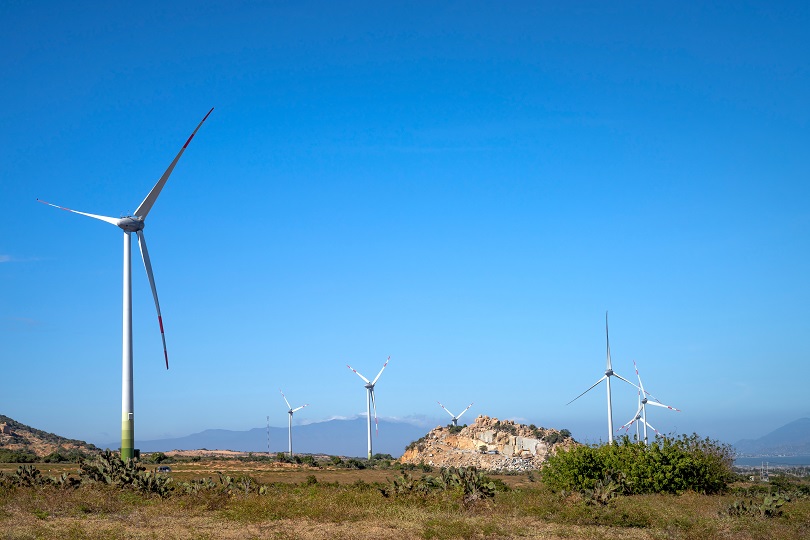The renewable energy industry has experienced exponential growth over the past decade, driven by the global push for clean and sustainable energy sources. As we transition away from fossil fuels, the renewable sector offers a promising alternative. However, like any industry, it is not without its own set of hazards and risks. Ensuring the safety of workers and minimizing environmental impacts remains a top priority for the renewable energy sector. In this article, we will delve into the top five hazards in the renewable energy industry, explore the specific challenges they pose, and discuss the measures necessary to mitigate these risks effectively.
Heights and Fall Hazards in Renewable Energy Industry
One of the most prominent and immediate dangers in the renewable energy industry is working at heights. Whether it’s constructing wind turbines that reach hundreds of feet into the sky or installing solar panels on elevated structures, workers are regularly exposed to the risk of falls. These falls can result in severe injuries or, tragically, even fatalities.
To mitigate these dangers, comprehensive training and adherence to strict safety protocols are essential. Workers must receive training on working safely at heights, including the proper use of fall protection equipment such as harnesses, lanyards, and anchor points. Employers should also conduct regular equipment inspections and maintenance to ensure that safety gear is in optimal condition and ready for use when needed.
Moreover, the industry can benefit from the use of innovative technology, such as drones and remote monitoring systems, to reduce the need for workers to be physically present at heights for routine inspections and maintenance. These advancements can significantly decrease the risk of accidents.

Electrical Hazards
The renewable energy industry relies heavily on electrical systems, many of which operate at high voltages. Workers are frequently required to work on or near these systems, exposing them to the risk of electrocution. Electrical hazards are among the most life-threatening in the industry, demanding the utmost caution.
Proper training in electrical safety procedures is non-negotiable. Workers must understand the dangers associated with high-voltage systems and be trained to recognize and address potential electrical hazards. Additionally, the use of personal protective equipment (PPE), such as insulated gloves and tools, is crucial when working with electricity. Lockout/tagout procedures should be strictly enforced to prevent accidental energization of equipment during maintenance or repairs.
Furthermore, the industry should invest in continuous education and training to keep workers up-to-date with the latest safety protocols and technologies. Implementing advanced electrical monitoring systems can also help identify issues before they become hazards.

Equipment and Machinery Hazards
The renewable energy sector relies on a wide range of machinery and equipment, from massive wind turbines and generators to construction vehicles and cranes. These machines, while critical to the industry, pose significant risks if not operated and maintained correctly.
Workers operating heavy machinery must undergo thorough training on equipment operation and safety protocols. They should understand the machinery’s limitations and potential hazards. Regular equipment inspections and maintenance are essential to prevent accidents and ensure the reliable and efficient operation of the renewable energy systems.
Technological advancements, such as the integration of sensors and automation, can enhance safety by providing real-time data on equipment performance and detecting potential issues early. Additionally, the implementation of safety management systems can help track maintenance schedules, monitor equipment health, and reduce the likelihood of accidents caused by equipment failure.

Weather and Environmental Hazards
Renewable energy installations are often located in remote or challenging environments, subjecting workers to a wide range of weather and environmental hazards. Whether it’s high winds at offshore wind farms, extreme temperatures in desert solar farms, or the harsh conditions at remote hydroelectric facilities, workers must contend with the elements.
To ensure worker safety in these conditions, employers should provide appropriate protective clothing, such as insulated gear for cold climates or cooling vests for extreme heat. Regular safety briefings and weather monitoring are essential to keep workers informed and prepared for changing environmental conditions.
Additionally, the industry should invest in advanced weather forecasting and monitoring technologies to provide real-time data on weather patterns and potential hazards. This information can help operators make informed decisions and take proactive measures to protect workers and assets.

The renewable energy industry holds great promise in addressing the world’s energy needs while reducing environmental impacts. However, it is vital to acknowledge and address the inherent hazards associated with this sector. Safety should always be a top priority, and a commitment to mitigating these risks is crucial to the industry’s continued growth and success.
Height-related hazards, electrical dangers, equipment and machinery risks, hazardous materials, and environmental challenges are among the top concerns in the renewable energy industry. By implementing comprehensive safety measures, investing in ongoing training, and embracing innovative technologies, the industry can minimize these hazards and create a safer and more sustainable future for both workers and the environment. Only through a steadfast commitment to safety can the renewable energy sector continue to thrive and contribute to a cleaner, more sustainable world.
